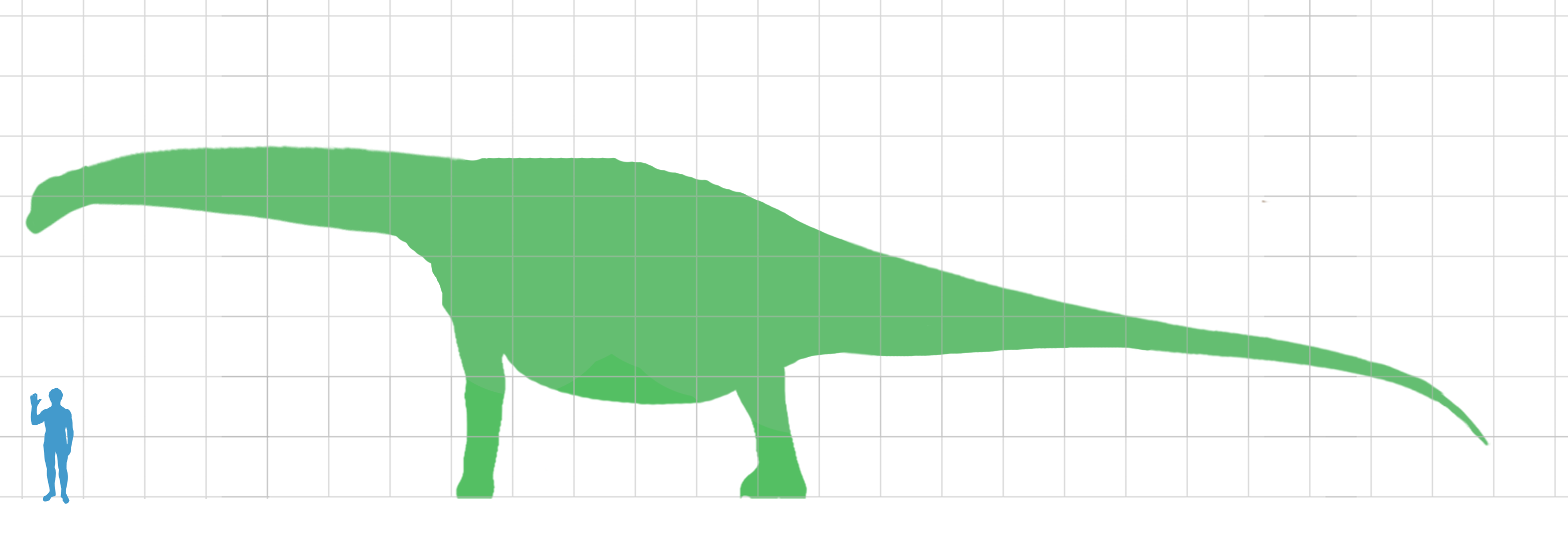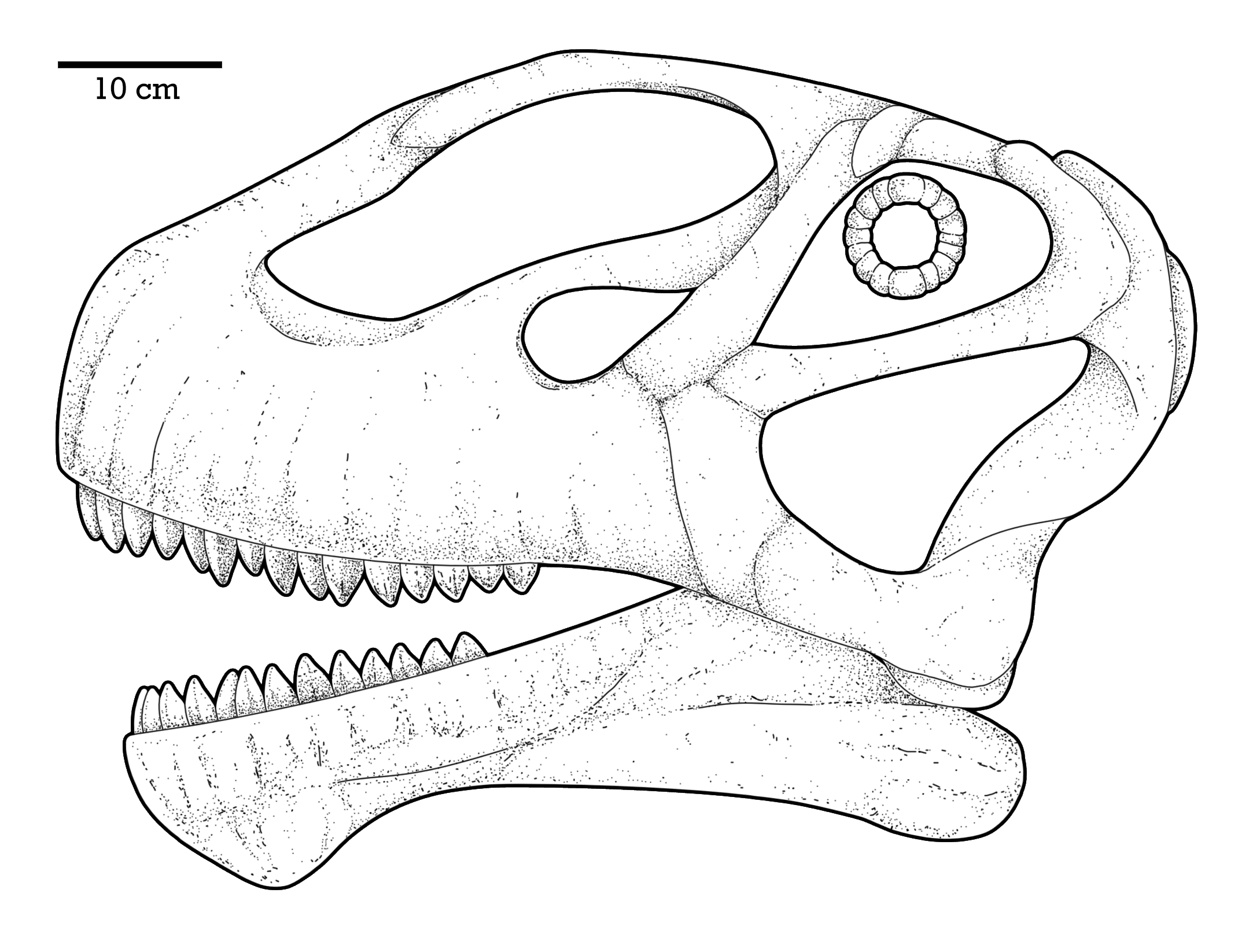|
Turiasaurus Riodevensis
''Turiasaurus'' (meaning " Turia lizard") is a genus of sauropod dinosaurs. It is known from a single fossil specimen representing the species ''Turiasaurus riodevensis'', found in the Kimmeridgian Villar del Arzobispo Formation of Teruel, Spain. Description ''Turiasaurus'' is believed to be the largest dinosaur ever found in Europe, and is among the largest dinosaurs known. It is estimated at in length and with a weight of .Royo-Torres, R., Cobos, A., and Alcalá, L. (2006). "A Giant European Dinosaur and a New Sauropod Clade." ''Science'' 314: 1925-1927.Paul, G.S., 2010, The Princeton Field Guide to Dinosaurs, Princeton University Press. The length of its skull is 70 centimetres, which is not too large. According to the paleontologist Luis Alcalá, this is because a larger head might have caused ''Turiasaurus'' to break its neck. Phylogenetic analysis shows that ''Turiasaurus'' lies outside of the Neosauropoda division and belongs to a new clade, Turiasauria, together wit ... [...More Info...] [...Related Items...] OR: [Wikipedia] [Google] [Baidu] |
Kimmeridgian
In the geologic timescale, the Kimmeridgian is an age in the Late Jurassic Epoch and a stage in the Upper Jurassic Series. It spans the time between 157.3 ± 1.0 Ma and 152.1 ± 0.9 Ma (million years ago). The Kimmeridgian follows the Oxfordian and precedes the Tithonian. Stratigraphic definition The Kimmeridgian Stage takes its name from the village of Kimmeridge on the Dorset coast, England. The name was introduced into the literature by French geologist Alcide d'Orbigny in 1842. The Kimmeridge Clay Formation takes its name from the same type location (although this formation extends from the Kimmeridgian stage of the Upper Jurassic into the Lower Cretaceous). It is the source for about 95% of the petroleum in the North Sea. Historically, the term Kimmeridgian has been used in two different ways. The base of the interval is the same but the top was defined by British stratigraphers as the base of the Portlandian (''sensu anglico'') whereas in France the top was defined as t ... [...More Info...] [...Related Items...] OR: [Wikipedia] [Google] [Baidu] |
Losillasaurus
''Losillasaurus'' (meaning " Losilla lizard") is a genus of sauropod dinosaur from the Late Jurassic and possibly Early Cretaceous (Kimmeridgian-?Berriasian) in the southeast of Spain. The type species of the turiasaurian ''Losillasaurus giganteus'' was discovered in the Villar del Arzobispo Formation in Valencia and formally described by Casanovas, Santafé and Sanz in 2001. The holotype material is from a subadult and includes part of a skull; complete cervical, dorsal, sacral, and caudal vertebrae as well as several fragments; skeletal elements from the limbs including a humerus, ulna, radius, and metacarpal; sternal plates; and from the pelvis: the ilium, ischium, and pubis. The genus is characterized by the dimension and shape of the neural spine of the proximal caudal vertebrae. The humerus is long, which despite being from a subadult specimen is within 20% of the size of ''Paralititan ''Paralititan'' (meaning "tidal giant") was a giant titanosaurian sauropod dinosaur g ... [...More Info...] [...Related Items...] OR: [Wikipedia] [Google] [Baidu] |
Jurassic Spain
The Jurassic ( ) is a geologic period and stratigraphic system that spanned from the end of the Triassic Period million years ago (Mya) to the beginning of the Cretaceous Period, approximately Mya. The Jurassic constitutes the middle period of the Mesozoic Era and is named after the Jura Mountains, where limestone strata from the period were first identified. The start of the Jurassic was marked by the major Triassic–Jurassic extinction event, associated with the eruption of the Central Atlantic Magmatic Province. The beginning of the Toarcian Stage started around 183 million years ago and is marked by an extinction event associated with widespread oceanic anoxia, ocean acidification, and elevated temperatures likely caused by the eruption of the Karoo-Ferrar large igneous provinces. The end of the Jurassic, however, has no clear boundary with the Cretaceous and is the only boundary between geological periods to remain formally undefined. By the beginning of the Jurassic, ... [...More Info...] [...Related Items...] OR: [Wikipedia] [Google] [Baidu] |
Late Jurassic Dinosaurs Of Europe
Late may refer to: * LATE, an acronym which could stand for: ** Limbic-predominant age-related TDP-43 encephalopathy, a proposed form of dementia ** Local-authority trading enterprise, a New Zealand business law ** Local average treatment effect, a concept in econometrics Music * ''Late'' (album), a 2000 album by The 77s * Late!, a pseudonym used by Dave Grohl on his ''Pocketwatch'' album * Late (rapper), an underground rapper from Wolverhampton * "Late" (song), a song by Blue Angel * "Late", a song by Kanye West from ''Late Registration'' Other * Late (Tonga), an uninhabited volcanic island southwest of Vavau in the kingdom of Tonga * "Late" (''The Handmaid's Tale''), a television episode * LaTe, Oy Laivateollisuus Ab, a defunct shipbuilding company * Late may refer to a person who is Dead See also * * * ''Lates'', a genus of fish in the lates perch family * Later (other) * Tardiness * Tardiness (scheduling) In scheduling, tardiness is a measure of a delay in exe ... [...More Info...] [...Related Items...] OR: [Wikipedia] [Google] [Baidu] |
Kimmeridgian Life
In the geologic timescale, the Kimmeridgian is an age in the Late Jurassic Epoch and a stage in the Upper Jurassic Series. It spans the time between 157.3 ± 1.0 Ma and 152.1 ± 0.9 Ma (million years ago). The Kimmeridgian follows the Oxfordian and precedes the Tithonian. Stratigraphic definition The Kimmeridgian Stage takes its name from the village of Kimmeridge on the Dorset coast, England. The name was introduced into the literature by French geologist Alcide d'Orbigny in 1842. The Kimmeridge Clay Formation takes its name from the same type location (although this formation extends from the Kimmeridgian stage of the Upper Jurassic into the Lower Cretaceous). It is the source for about 95% of the petroleum in the North Sea. Historically, the term Kimmeridgian has been used in two different ways. The base of the interval is the same but the top was defined by British stratigraphers as the base of the Portlandian (''sensu anglico'') whereas in France the top was defined as th ... [...More Info...] [...Related Items...] OR: [Wikipedia] [Google] [Baidu] |
Madrid
Madrid ( , ) is the capital and most populous city of Spain. The city has almost 3.4 million inhabitants and a metropolitan area population of approximately 6.7 million. It is the second-largest city in the European Union (EU), and its monocentric metropolitan area is the third-largest in the EU.United Nations Department of Economic and Social AffairWorld Urbanization Prospects (2007 revision), (United Nations, 2008), Table A.12. Data for 2007. The municipality covers geographical area. Madrid lies on the River Manzanares in the central part of the Iberian Peninsula. Capital city of both Spain (almost without interruption since 1561) and the surrounding autonomous community of Madrid (since 1983), it is also the political, economic and cultural centre of the country. The city is situated on an elevated plain about from the closest seaside location. The climate of Madrid features hot summers and cool winters. The Madrid urban agglomeration has the second-large ... [...More Info...] [...Related Items...] OR: [Wikipedia] [Google] [Baidu] |
Zby Atlanticus
''Zby'' is an extinct genus of turiasaurian sauropod dinosaur known from the Late Jurassic (late Kimmeridgian stage) of the Lourinhã Formation, central west Portugal. It contains a single species, ''Zby atlanticus''. It is named after Georges Zbyszewski, who studied the geology and paleontology of Portugal. Description ''Zby'' was first described and named by Octávio Mateus, Philip D. Mannion and Paul Upchurch in 2014 and the type species is ''Zby atlanticus'', although it was initially thought to be ''Turiasaurus riodevensis''. It is known solely from its holotype, a closely associated partial skeleton including a complete tooth with root, a fragment of cervical neural arch, an anterior chevron, and an almost complete right pectoral girdle and forelimb. ''Zby'' is differentiated from other sauropods based on four autapomorphies, including a prominent posteriorly projecting ridge on the humerus at the level of the deltopectoral crest. ''Zby'' is suggested to be closely rela ... [...More Info...] [...Related Items...] OR: [Wikipedia] [Google] [Baidu] |
Holotype
A holotype is a single physical example (or illustration) of an organism, known to have been used when the species (or lower-ranked taxon) was formally described. It is either the single such physical example (or illustration) or one of several examples, but explicitly designated as the holotype. Under the International Code of Zoological Nomenclature (ICZN), a holotype is one of several kinds of name-bearing types. In the International Code of Nomenclature for algae, fungi, and plants (ICN) and ICZN, the definitions of types are similar in intent but not identical in terminology or underlying concept. For example, the holotype for the butterfly '' Plebejus idas longinus'' is a preserved specimen of that subspecies, held by the Museum of Comparative Zoology at Harvard University. In botany, an isotype is a duplicate of the holotype, where holotype and isotypes are often pieces from the same individual plant or samples from the same gathering. A holotype is not necessarily "typ ... [...More Info...] [...Related Items...] OR: [Wikipedia] [Google] [Baidu] |
Turia Wiki ''
{{disambiguation, geo, surname ...
Turia may refer to: Places *Turia (river), a river in southeastern Spain *Turía (river), a small river in northern Spain *Turia Valley, a valley in northern Spain *Turia, Covasna, a commune in Covasna County, Romania *Turia (Cașin), a river in Romania *Turia, a village in Valea Mare Commune, Olt County, Romania *Turiya River, a river in Ukraine Other * Tariana Turia (born 1944), co-leader of New Zealand's Maori Party * Turia, Thuria or Curia, woman of the Curius family in ancient Rome * Turia Mau, French model featured on the 1968 ''Sports Illustrated Swimsuit Issue'' * '' Turia'', a genus of molluscs in the family Veneridae * ''Turia'', a synonym of the plant genus ''Luffa ''Luffa'' is a genus of tropical and subtropical vines in the cucumber family (Cucurbitaceae). In everyday non-technical usage, the luffa, also spelled loofah, usually refers to the fruits of the species ''Luffa aegyptiaca'' and ''Luffa acutang ... [...More Info...] [...Related Items...] OR: [Wikipedia] [Google] [Baidu] |
Galveosaurus
''Galvesaurus'', or ''Galveosaurus'', (meaning " Galve lizard") is a genus of brachiosaurid sauropod dinosaur from the Late Jurassic period. Fossils of the only known species, ''G. herreroi'', were found in Galve, Spain, hence its generic name, "Galve lizard". The specific name ''G. herreroi'' honours the discoverer, José María Herrero. Phylogeny While Royo-Torres ''et al.'' (2006) grouped ''Galvesaurus'' within Turiasauria alongside ''Losillasaurus'' and ''Turiasaurus'', Barco & Canudo (2012) noted that ''Galvesaurus'' lacks turiasaurian synapomorphies and found that it was actually a macronarian. New material described in 2019 reveals ''Galvesaurus'' to be a brachiosaurid. History During the 1980s, a fossil site known as Cuesta Lonsal, in the Kimmeridgian to Tithonian Villar del Arzobispo Formation near Galve (Teruel), Spain, was excavated by local amateur fossil hunter José María Herrero after he found the fossilized remains of a sauropod dinosaur. Zaragoza Univers ... [...More Info...] [...Related Items...] OR: [Wikipedia] [Google] [Baidu] |
Turiasauria
Turiasauria is an unranked clade of basal sauropod dinosaurs known from Middle Jurassic to Early Cretaceous deposits in Europe, North America, and Africa. Description Turiasauria was originally erected by Royo-Torres et al. (2006) to include ''Turiasaurus'', ''Galveosaurus'' and ''Losillasaurus'', all of which hail from the Villar del Arzobispo Formation (Tithonian-Berriasian) of Spain. Turiasuria was defined by the authors as "all Eusauropoda closer to ''Turiasaurus riodevensis'' than to ''Saltasaurus loricatus''". Cladistic analysis (Royo-Torres ''et al.'', 2006; 1927) of 309 characters and 33 taxa suggests that the turiasaurians lie outside the Neosauropoda and form a monophyletic group. The clade is diagnosed by the presence of vertical neural spines, posterior centroparapohyseal laminae on the dorsal vertebrae, the absence of pre- and postspinal laminae on the dorsal vertebrae, the absence of a scapular acromial crest, the presence of a prominent humeral deltopectoral crest, ... [...More Info...] [...Related Items...] OR: [Wikipedia] [Google] [Baidu] |




